In recognition of Special Education Day, which commemorates the signing of the Individuals with Disabilities Education Act into law on December 2, 1975, we’re kicking off a 10-day social media campaign to highlight our District’s special education program. Check back on this page each school day through December 15 for a new post.
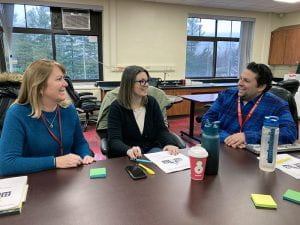
Day 10: What happens when a student no longer needs special education services?
The CSE/CPSE considers a student for declassification when updated testing is conducted and the effects of a student’s disability no longer prevent them from accessing the general education curriculum.
When students demonstrate the ability to access the general education curriculum without Special Education supports, the CSE/CPSE will determine that the student be declassified. At that time, the student’s Special Education supports will be terminated; however, the student may continue to receive testing accommodations/program modifications for one year after the date of declassification. When appropriate, the CSE/CPSE will recommend that a student be declassified with support services.
As defined under section 100.1(q) of the Regulations of the Commissioner, declassification with support services means that services provided to a student or a student’s teacher in the first year that a student moves from a special education program to a full-time general education program to aid the student in moving from special education to full-time general education. These support services include: psychological services, social work services, speech and language improvement services, non-career counseling, and other appropriate general education support services. The student’s teacher may also be provided with the assistance of a teacher aide or a teaching assistant and consultation with appropriate personnel.
Upon declassification with support services, the CSE/CPSE will indicate: the projected date of initiation of such services, the frequency of provision of services; and the duration of the services (services may be provided for up to one year after the student enters the full-time general education program). Following the CSE/CPSE meeting, the parents/guardians will receive a copy of the student’s last IEP with the declassification recommendations. This information will also be shared with the student’s general education teachers and providers.
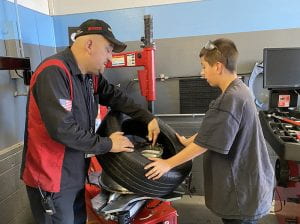
Day 9: What transition support services are available to prepare students for post-secondary success?
Transition supports are provided to all students with an IEP, as a means to help them prepare and plan for life after high school. Student voice is an important aspect of this planning.
New York State regulations indicate that students that at age 12 and those referred to special education for the first time that are age 12 and over, must participate in an assessment that includes a review of school records and teacher assessments, as well as parent and student interviews, in order to determine vocational skills, aptitudes and interests. This assessment is updated annually and is used to identify a starting point for the CSE to begin exploring career options for the student. The transition plan becomes a part of a student’s IEP during the academic year in which a student turns age 15.
There are two important components to every transition plan: post-secondary goals and transition services.
Post-secondary goals identify what a student realistically plans to do after high school or upon turning age 21. Post-secondary goals are focused on four areas: vocational training, post-secondary education, job/employment skills and independent living skills. These goals are measurable and should be focused on what a student’s needs will be after high school. These goals are reviewed and updated annually, as they may change as the student approaches graduation or turning 21 years old.
Transition services are provided to students to support them in achieving their post-secondary goals and are also reviewed and updated annually. These services include special education support within their classroom, related services (psychological counseling, speech/language therapy, occupational therapy, physical therapy, hearing impaired services and/or vision services), community experiences, college and career counseling and support for developing activities of daily living skills. These services may take place at school, but most occur within community experiences or at home.
Rockland BOCES offers a wide range of career and technical education programs that can be a good fit for students who plan to enter the workforce after high school. SOCSD student Philip Munno is learning the basics of automotive maintenance, how to use hand and power tools and how to troubleshoot using diagnostic equipment through BOCES’ Automotive Services program. Internships at local automotive dealerships and repair facilities are available and can lead to paid employment for Automotive Services students, who may also earn Automotive Service Excellence certificates.
Tomorrow’s topic: Declassification with supports
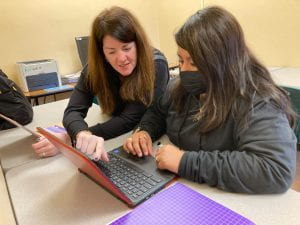
Day 8: What role do Related Service Providers play in Special Education?
A host of professionals known as Related Service Providers (some, but not all, featured here) work closely with general education and special education teachers, teaching assistants and teacher aides to provide services which address specific needs identified in students’ Individualized Education Plans. This includes speech/language pathologists, school psychologists, school social workers, school nurses, occupational therapists, physical therapists, teachers of the hearing impaired and teachers of the visually impaired.
Based on their unique IEP, a student may participate in general educational classes and receive a single service, such as speech/language. In other cases, students may be placed in different learning environments and/or receive multiple services, according to their individual needs.
Teresa, a Tappan Zee High School student, has worked with Teacher of the Hearing Impaired Jennifer McCormack since first grade. “Working with Ms. McCormack in school helps me have a better understanding of work when I do not understand or hear the information correctly. We review my work and she helps me correct my mistakes,” she said.
“I love what I do!” reported McCormack, a Rockland BOCES provider who has been based in SOCSD for 11 of her 26 years of teaching. “I work in all four schools and provide academic support and equipment maintenance for students who have hearing loss. Background noise can make it challenging for these students to listen and understand everything that is happening in the classroom. I fill in the gaps.”
Speech-language pathologists work with students exhibiting a spectrum of communication disorders, including those involving language, articulation, fluency and voice/resonance and play an important role in student literacy. “The focus of speech therapy in schools is communication,” explained Cottage Lane Elementary School Speech-Language Pathologist Jean Kane, MA/SLP, TSHH. “Students must be able to understand and use language, express their thoughts and opinions, interact effectively and efficiently with peers and adults and produce speech which others can easily understand. Here at the mid-to-upper elementary school level, it’s all about helping students feel safe and comfortable enough to communicate through direct instruction and strategies that help compensate for their weaknesses. Students understand the importance of learning good language skills because language is everywhere!”
At TZHS, Speech-Language Pathologist Betty Ann Brennan, MA, CCC-SLP, works with skills they need for school and for life after graduation. “Students are taught specific learning strategies to support their academic success, while also working on how to effectively communicate across a wide range of social and academic settings,” she noted. (Also pictured is WOS Speech-Language Pathologist Melissa Jacob, MA, CCC-SLP, TSSLD.)
School psychologists, social workers and prevention counselors (Lisa Murphy, PsyD; Jessenia Cursio, LCSW; and, Annie Scott, LMSW, CPP pictured, respectively) provide direct mental health support and interventions to help students successfully access their education and consult with building administrators, staff and Counseling Department colleagues to enhance support strategies. They provide mandated counseling for students with disabilities, as well as facilitate groups to support students in various areas related to social skills and executive function. Our school psychologists also serve as the primary chairs for the Committee on Special Education and Child Study Teams within their buildings.
Our school nurses, such as 1:1 School Nurse Jennifer Hind, RN (pictured), play an important role in coordinating care to help students with medical needs stay safe and participate in their education at school.
As a movement specialist, Certified Physical Therapist Mary Kate O’Callaghan, PT helps students in grades K-12 physically participate in their educational environment throughout the school day. Interventions are designed to enable students to travel throughout their school, participate in classroom activities, and safely navigate stairs and restrooms–as well as the cafeteria and other public spaces. “Our focus in the early grades is to help students attain a solid foundation physically, strengthening the whole body targeting their core muscles. A strong core enables a student to sit upright for a lesson, allowing them to focus on the lesson promoting stamina and increasing endurance necessary for school-based activities,” O’Callaghan explained. “Collaboration occurs with other related services providers and, of course, the classroom teacher, to provide the best seating options for the student. Students in higher grades continue to work on strengthening their bodies, while incorporating motor planning activities and individualized needs. I’m so very lucky to be able to follow many of my students through the various buildings of the district, watching them grow into young adults.”
Rockland BOCES Occupational Therapist Monica Diaz, MS, OTR-L, works with students at CLE. “Students who receive occupational therapy services participate in a holistic approach to improve upon a variety of underlying visual-motor, fine motor, visual perception and self-regulation skills that are meant to assist them in their ability to access curriculum. Throughout the district, the OT providers highlight the importance of students becoming an active part of their sessions by learning to recognize their own strengths, embrace personal weaknesses and make connections between how skills learned in OT can help them in the classroom and within the broader school environment,” said Diaz. “I feel extremely lucky to be part of a district that truly embraces the importance of OT for our students. Each year, my personal goal is for my students to feel validated in what they believe to be hard, feel confident enough to try strategies that may help and, ultimately, trust in ‘The Power of YET!’”
Tomorrow’s topic: Transition support services
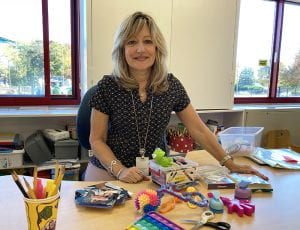
Day 7: What assistive technologies are available to SOCSD students?
SOCSD special education staff and related service providers rely on a variety of assistive technologies to help students access their curriculum and more effectively engage in their own learning. From low-tech to high-tech, there are a multitude of tools that South Orangetown students use.
“Low tech assistive technology is an integral and integrated part of the early childhood classrooms,” WOS Certified Occupational Therapy Assistant Beth Kaplan (pictured) said. “These tools support students with delays in fine motor skills, self-regulation and handwriting/visual perceptual skills. Modifications that we use include incline boards, modified paper, pencil grips, modified pencils/crayons, alternative seating options, highlighters and modified scissors.”
“Knowing your students and their individual needs is a big part of assistive tech,” explained Special Education teacher Christa Loughran-Mellozzo, who shares Special Education Team Leader responsibilities at South Orangetown Middle School with Special Education teacher Michael Ryan. “One of the most significant things to consider is whether the technology levels the playing field and keeps them engaged in their learning or if it makes things too easy or too hard. Our goal is to help our students be confident, comfortable and successful and when they buy in and access things that they couldn’t before…that success is incredibly rewarding.”
In recent years, the District has implemented web-based tools that are available to all students, which is particularly important for middle schoolers. “In eighth grade, students don’t want to stand out, which is why we let them use their cell phones for things like speech-to-text for note taking. It eliminates stigma, so students will use it,” Ryan said. “We used to have to manually scan all the books into a program to create audio versions. Now, all the books purchased by the District–novels and textbooks–have an audio component, so students can just put in their earbuds just like everyone else. Learning to use tools that are accessible to them is a life skill and it’s something we model ourselves as teachers.”
In addition to audio books, all District-issued Chromebooks are equipped with speech-to-text capabilities and Kami, an app with features including voice typing, dark mode, read aloud and Open Dyslexic and Lexend fonts. Learning Ally, a service for students with Individualized Education Plans, is another source for audiobook resources. Other high tech tools include wearable FM systems that can transmit directly to an earpiece or to specially placed speakers to help students with central auditory processing disorder, hearing impairments or attentional issues.
“When I first arrived here many years ago, there were so many apps being requested that it became unmanageable for what was then the Special Education office. Our Special Education Leadership Team did a crosswalk across the district to determine what we had and how staff were using both low and high assistive technologies. It really helped me to get a better understanding of where instructional technology fit into the picture,” reported Director of Technology George Brady. “Over the past several years, in close partnership with the Pupil Personnel Services department, my team has focused on ubiquitous access to resources for all learners–bridging that equity divide within the constraints of our budget. We’ve found that many of the tools initially acquired for special education have broader application. For example, a text-to-speech app introduced a few years ago to meet the needs of a group of classified students was subsequently adopted by World Language teachers to support their instruction and then by our library media specialists/teachers. Some of our most pioneering uses of instructional technology across the District have been seeded by our special education population.”
For students who have a need that requires tools beyond what is available in-district, schools reach out to the Westchester Institute for Human Development to complete a full assistive technology evaluation. Based on their findings WIHD may trial a variety of new, high tech devices with a student and conduct in-school and at-home training with students, staff and parents.
“As a teacher, you have to walk a fine line. [SOMS Math teacher] Vinny Piscitelli and I post all of our notes on Google Classroom so that they are there for everyone. Assistive technology gives students access to the information they need; then, it’s up to them to do the work. It’s about working smarter, not harder,” observed Ryan.
Tomorrow’s topic: Related service providers
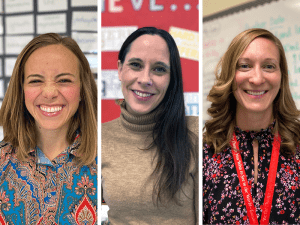
Day 6: What are special classes and individualized placements?
When determined by the CSE/CPSE, students are placed in a “special class.” This is a class consisting of only students with disabilities who have been grouped together based on similar individual needs for the purpose of receiving specially designed instruction in a self-contained setting. Students receive their primary instruction separate from their nondisabled peers and, therefore, in a more restrictive environment. Special classes are currently offered at South Orangetown Middle School and Tappan Zee High School; however, an annual review is conducted to assess need at each building.
Tappan Zee High School Science and Special Education teacher Kristen Driscoll and South Orangetown Middle School Special Education teachers Emily McKay and Jill Rutherford teach special classes in their respective buildings.
“Due to its smaller size, the special science class enables us to provide individualized support for each student and progress at an appropriate pace in order to meet the learning standards for the Living Environment Regents course,” noted Driscoll, who also co-teaches science at the high school. “I’m thankful for the awesome support of Teaching Assistant Donna Soyk, who helps each of our students with their class and lab assignments. We value our students’ individual strengths and collaborate closely to support their success.”
“This is an opportunity for students to feel successful and build confidence. It feels safe to raise your hand, make mistakes and learn from them,” McKay said. “In this setting, some students are more willing to be actively involved in their learning and to take risks–and they need to take risks to grow.”
Added Rutherford, “For the students we teach, this environment allows them to do the things they need to do to be successful learners. It gives them a boost and, at the same time, they have the opportunity to participate in Explore classes, lunch, recess, sports and extracurriculars with all their friends.”
Some students require individualized placements due to their specific disability. This is a challenging decision made by the CSE/CPSE, in conjunction with the parent/guardian. This process requires applications to be sent to all appropriate programs in New York State, as well as parental involvement in visiting placement options and participating in the interview process. Rockland BOCES is a key partner in providing these individualized placements.
Tomorrow’s topic: Assistive technologies
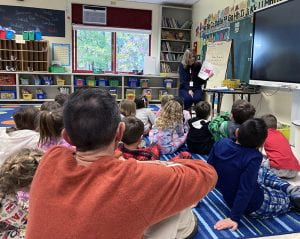
Day 5: What is co-teaching?
Integrated co-teaching (ICT) services, as defined in regulation, means the provision of specially designed, academic instruction provided to a group of students with disabilities in mainstream (general education) classes. ICT is implemented in all SOCSD schools.
Within this model, a general education teacher and a special education teacher jointly provide instruction to a class that contains students with and without disabilities. They co-plan and prepare multi-sensory and differentiated lessons, activities and projects and both deliver instruction to all students employing a range of teaching strategies. All special education teachers in a co-teach partnership serve as case managers for students with IEPs.
“Art Gunther and I have been fortunate to co-teach together for over 15 years,” said William O. Schaefer Elementary School Special Education teacher Heidi Hill. “We use a variety of co-teach models. It is exciting because each year is never the same, based on the students we have. Although we have clearly defined our roles, the students and families view us as true partner teachers. Our students know that we create a safe environment where all students learn and grow at their individual levels and pace. We support learning from mistakes and model that as adults too. We ensure that all classified students grow and achieve their goals, just as our general education students achieve their own successes. It is a powerful teaching model when you can differentiate instruction and lessons to meet the needs of each student.”
Tomorrow’s topic: Special classes and individualized placements
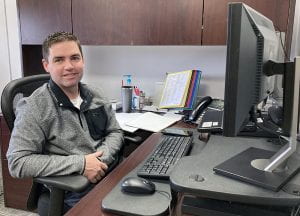
Day 4: Once eligibility has been established, how is the student’s Individualized Education Plan developed and implemented?
When the Committee on Special Education (CSE) or Committee on Preschool Special Education (CPSE) determines that a student presents with a disability, the child’s Individualized Education Plan (IEP) is developed. The IEP is a detailed document in which the child’s learning, cognitive, social/emotional, motor, speech/language and vision/hearing needs are defined. In addition, the IEP also outlines the supports the child requires–always to be provided in the least restrictive environment possible–to access the general education curriculum. For school-aged children, student goals are a driving force in creating an appropriate IEP. Programs and services are designed to support and strengthen students’ weaknesses and build on their strengths.
Once the IEP is developed, the team of experts identified to teach/support the child, is notified of the determination and provided access to the finalized IEP. In addition, at least one member of the CSE reviews the document with the classroom teacher(s) and other providers. The team may include special education teachers, reading teachers, school nurse, school counselors, social workers, related service providers (speech/language pathologists, school psychologists, occupational therapists, physical therapists, teachers of the hearing impaired and teachers of the visually impaired). The team members are determined by the student’s individualized needs.
The services and supports outlined in a school-aged student’s IEP are provided during the school-day as recommended by the CSE.
When the CPSE recommends services/supports for a preschool-aged child, the child receives supports through the collaboration and coordination of the student’s parents and school and/or county approved providing agency. Chairperson Tom Colgan supports families throughout the CPSE process.
Tomorrow’s topic: The co-teach model
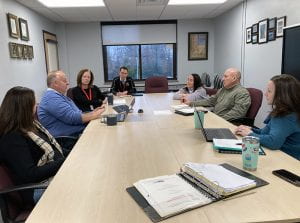
Day 3: What is the role of the Child Study Team?
Any student can be referred to their building’s Child Study Team, which is chaired by its school psychologists. Child Study Teams are a forum for administrators, case managers, nurses, Pupil Personnel Services and Response to Intervention staff to meet to discuss and plan interventions, and collaborate on supporting students who are struggling with social-emotional, behavioral, academic and/or home issues.
When a school-aged student is referred to the Committee on Special Education, regardless of who made the referral, the Child Study Team is the anchor in the process. Members of the team are assigned to complete all required evaluations, share results with parents and team members to seek critical feedback on the results and identify any additional testing being recommended. Members of the Child Study Team actively participate in the CSE.
Tomorrow’s topic: Development and implementation of the IEP
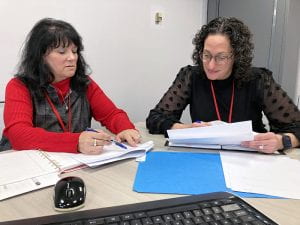
Day 2: How is eligibility for special education services determined?
In accordance with state law, each Board of Education must appoint a Committee on Preschool Special Education (CPSE) and Committee on Special Education (CSE) to assist it in meeting its responsibilities to students with disabilities. Committee members may include the parents of the student, a regular education teacher, a special education teacher or related service provider, a school psychologist, an additional parent member and a representative of the school district.
A parent/guardian, teacher or administrator may refer a child to the CPSE (children ages 2-4) or CSE (school-aged children) for an evaluation. Referrals must be made in writing to the school counselor, school principal or the Assistant Superintendent for Pupil Personnel Services Karen Tesik, Ed.D.
Once a referral is received, the Office of Pupil Personnel Services (PPS Office) sends consent for an initial evaluation form to the parents/guardians. When the PPS Office receives the signed consent for initial evaluation, the District has 60 days to conduct the necessary evaluations and hold an initial eligibility determination meeting through the Committee on Special Education.
When consent is received, the evaluation process begins and includes: the completion of a social history by the parent/guardian, physical examination by the child’s pediatrician, classroom observation, psychological evaluation and educational evaluation. In some cases, additional testing including a speech/language, occupational therapy and/or physical therapy evaluation is also conducted. Bilingual evaluations are conducted for students who require testing to be completed in their native language. Once all evaluations are completed and shared with the parents, an initial eligibility determination meeting is scheduled.
At the initial eligibility meeting, all of the collected data and information about the student’s skills, abilities, and classroom functioning are discussed by the CSE/CSPE Committee to determine if the student requires the support of Special Education to access the general education curriculum. If the student is determined eligible to receive Special Education services, the CSE/CPSE will develop an Individualized Education Plan (IEP). If a school-aged student is found ineligible, they will be referred to the building-level RTI Team for consideration for supports.
Questions? Contact CPSE Coordinator Thomas Colgan (tcolgan@socsd.org) or Supervisor of Special Education/CSE Coordinator Lori Graham (lgraham@socsd.org).
Tomorrow’s topic: The Child Study Team
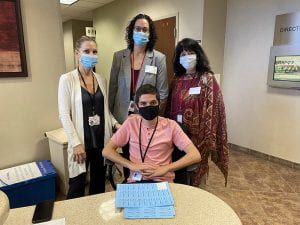
Day 1: So, what is special education?
“Special Education is a set of individualized supports provided by the school district to students with disabilities,” explains Supervisor of Special Education Lori Graham. “Within each school, a multi-disciplinary team of professionals and a broad continuum of instructional and related services options support student growth. We work closely with families to build the strong home/school partnerships needed to help students access our curriculum and succeed to their fullest potential.
“One of our priorities is to do what’s right for students and ensure they have access to what they need. This often means working collaboratively and creatively. The Pupil Personnel Services office has also focused on including student voice in creating appropriate IEPs. Finally, a key component of our special education planning–which can begin at age 12–is providing opportunities for our special education students to engage in the programs, life skills and social skills training, and transition work they need to prepare them for post-secondary success.”
Pictured with Graham and Assistant Superintendent for Pupil Personnel Services Karen Tesik, Ed.D. is TZHS ‘22 alumnus Jack Massaro, who is enrolled in the Rockland BOCES Project SEARCH program at Good Samaritan Hospital. Project SEARCH is designed for young adults whose main goal is employment. Interns receive coaching and accommodations as they rotate among a variety of work sites to develop job skills and experience.
Tomorrow’s topic: Eligibility determination for special education services